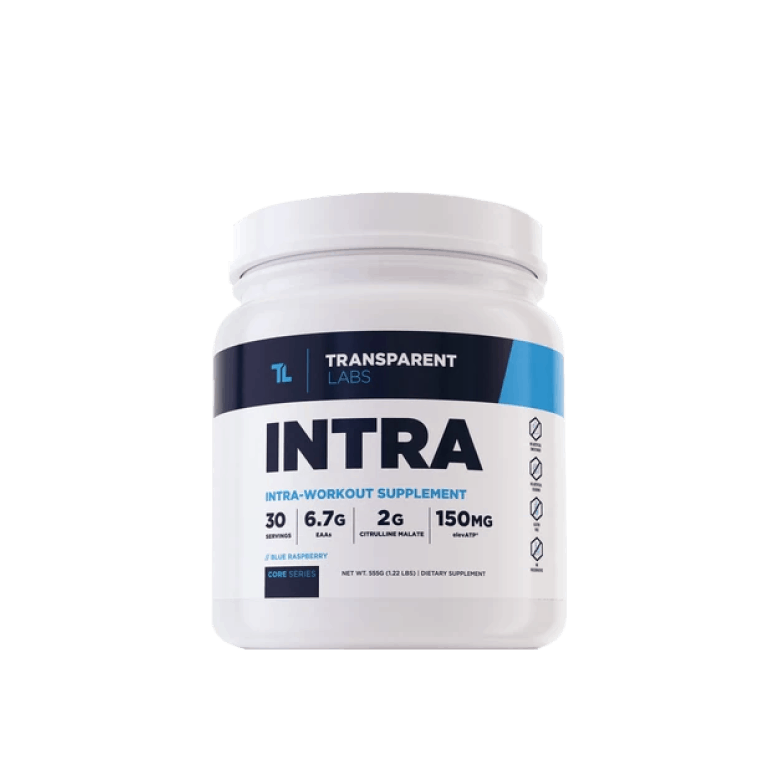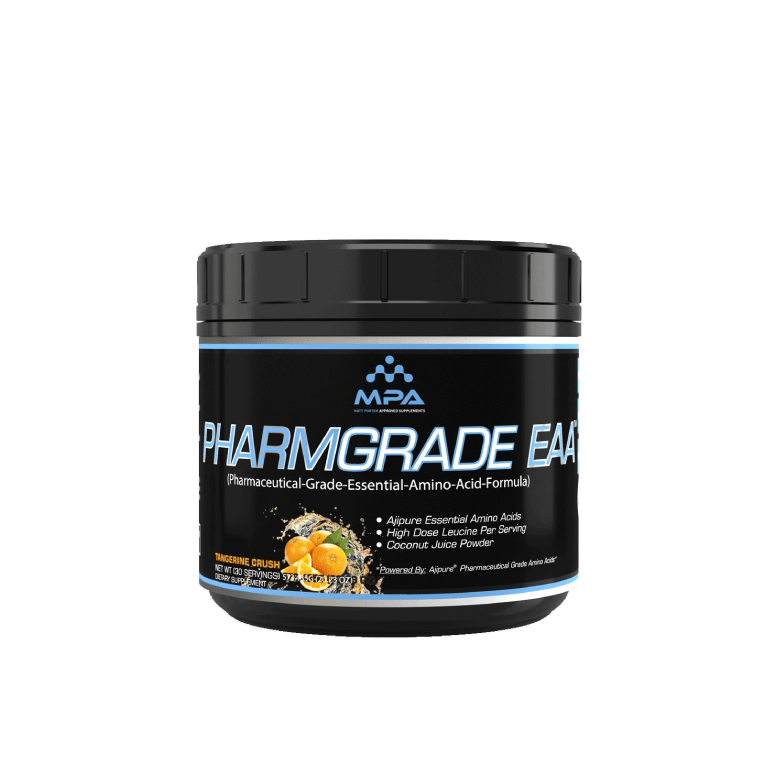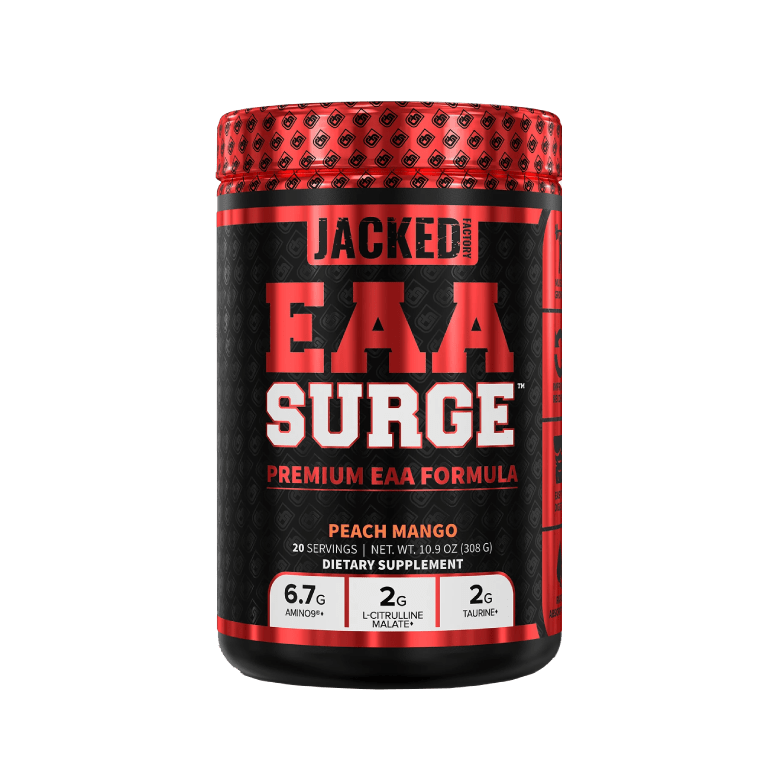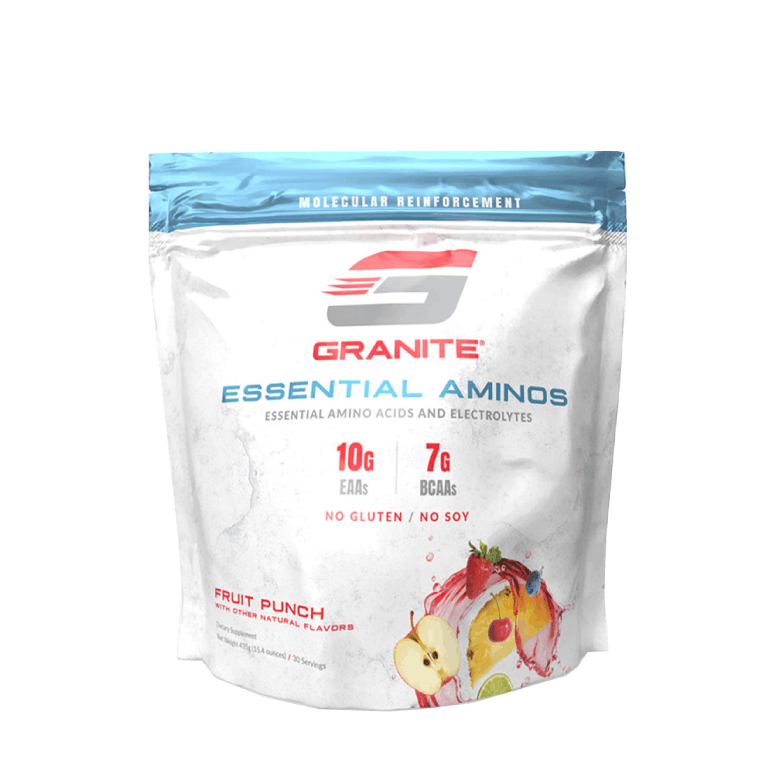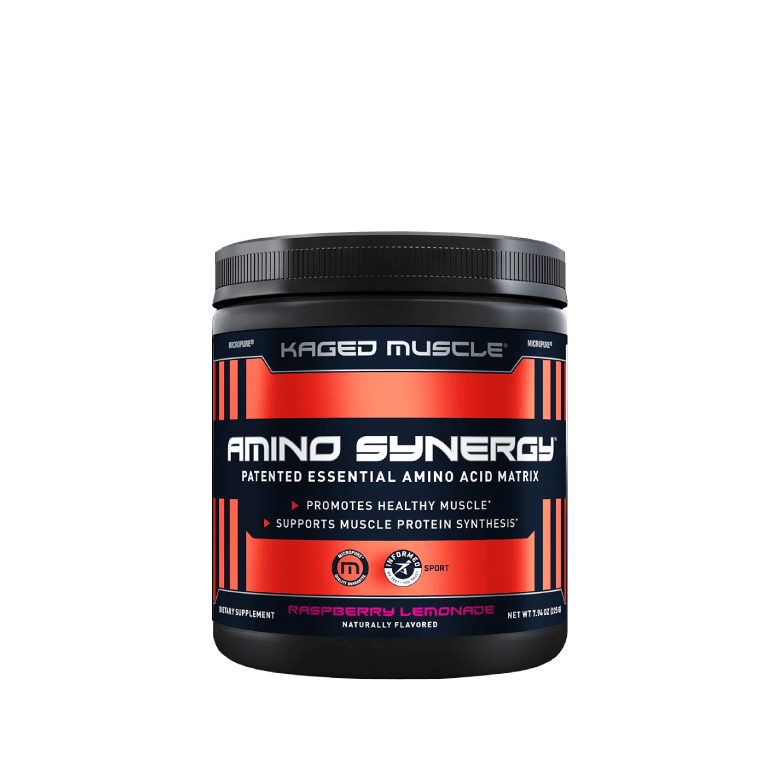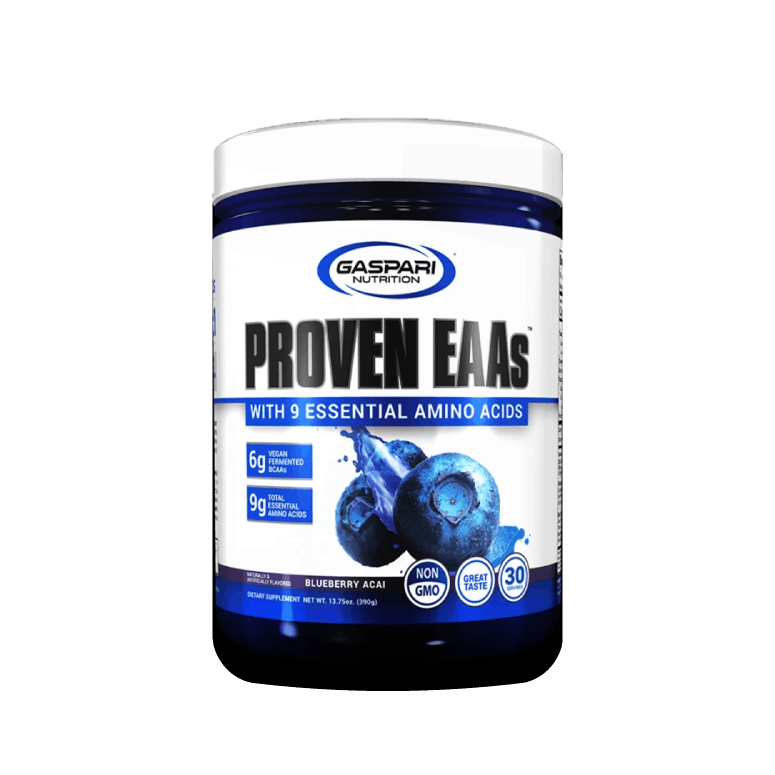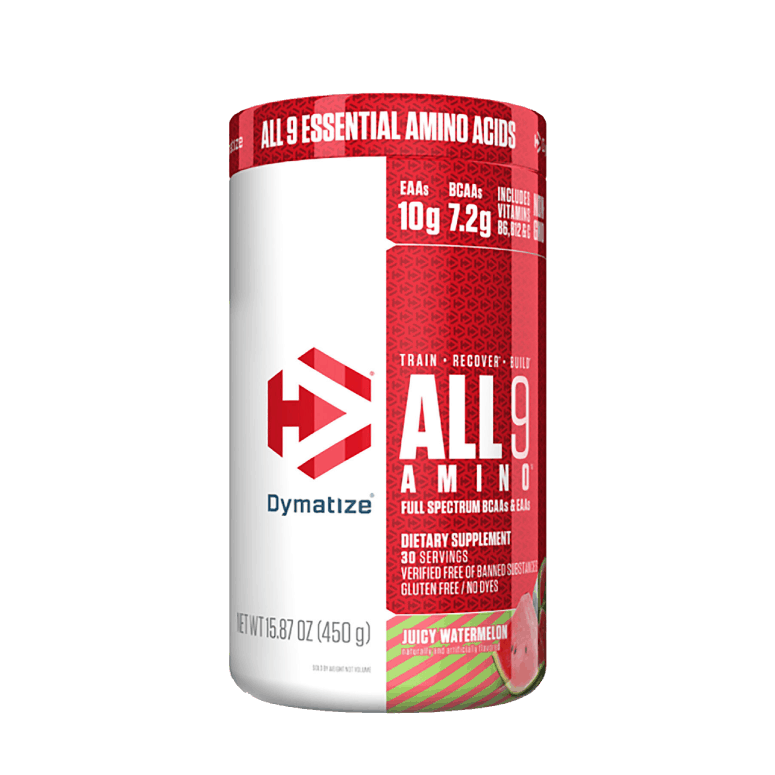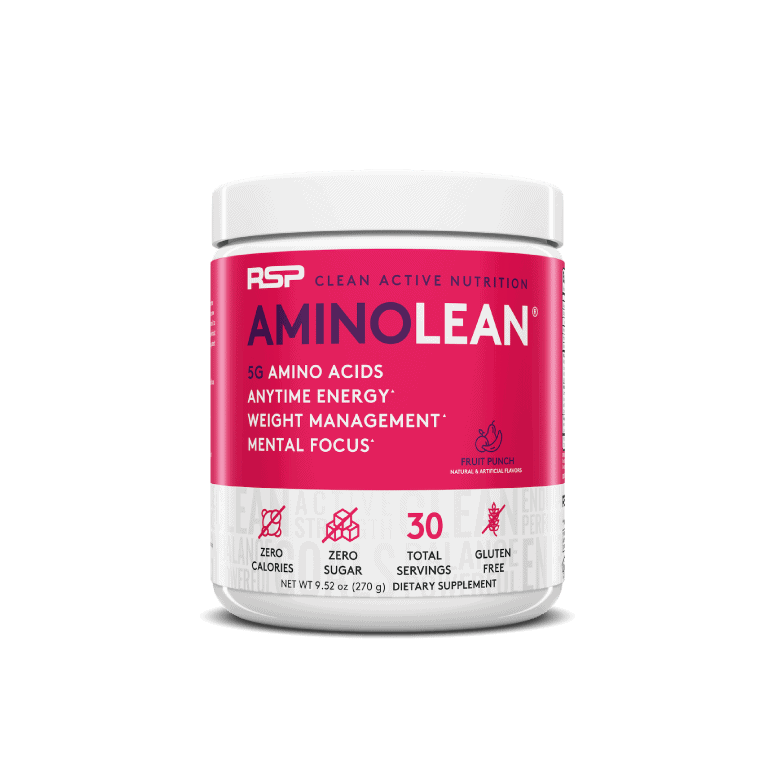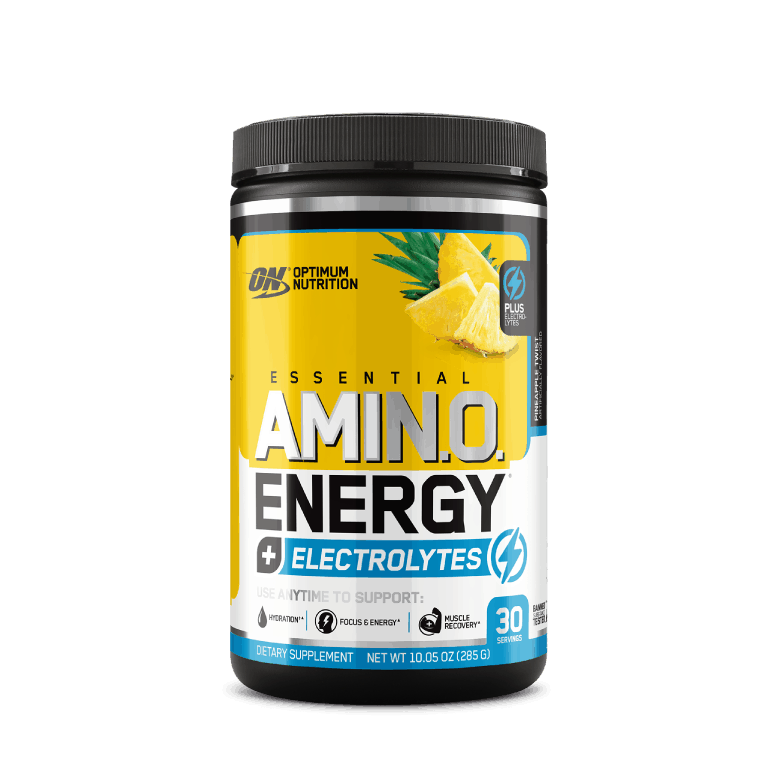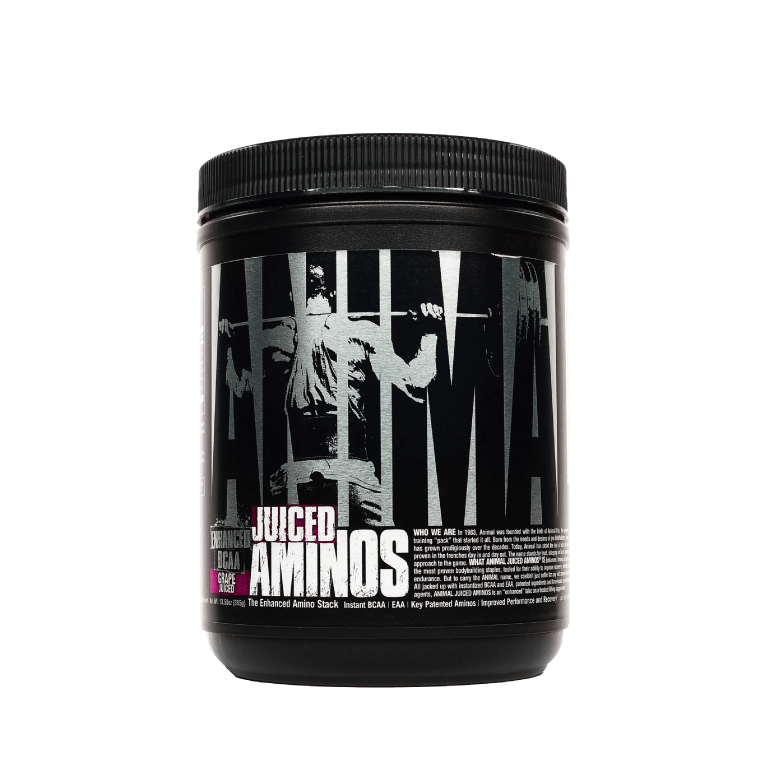At the turn of the 21st century, branched-chain amino acids (BCAAs) flourished as the go-to supplement for individuals looking to improve recovery and build muscle. Now, enter the best EAAs.
While amino acid supplements have been around for decades, essential amino acids (EAAs) are just beginning to make their way into the spotlight. Frankly, their prominence in the supplement space is long overdue. But in any case, it appears EAAs are here to stay.
Whether you’re an entry level athlete or a grizzled gym veteran, EAAs boost the bodies ability to perform athletically and the ability to recover thereafter. In order to enjoy these benefits however, you’ll need to find a good product with the right formulation.
Doing so presents challenges in the form of time constraints and financial limitations. After all, one person can only try so many supplements. But that’s what you have us for! We’ve done the leg work for you, and have scoured the internet to find the best EAA supplements on the market.
The EAAs We RAVE About
Are EAAs Better than BCAAs?
Essential amino acids (EAAs) are not just BCAAs. Instead, EAAs are supplements that provide all nine essential amino acids required for creating new proteins. It might help to think of EAAs as “BCAAs and then some.”
Thus, EAAs are superior to BCAA supplements based solely on the fact that the body requires all nine essential amino acids to create new proteins. Since proteins are the major constituents of muscle tissue, EAAs are quickly setting the standard for intra-workout and post-workout supplement protocols.
The best EAA supplements give your body a precise ratio of these nine building blocks to support protein synthesis and promote muscle growth.
What Are the Best EAAs?
Essential amino acids (EAAs) are a group of nine amino acids (think: building blocks of protein). They are considered essential since the body cannot create these amino acids on its own. Instead, we need to consume EAAs from food and supplements to ensure proper biological function.
The nine EAAs include:
- Histidine
- Isoleucine (BCAA)
- Leucine (BCAA)
- Lysine
- Methionine
- Phenylalanine
- Threonine
- Tryptophan
- Valine (BCAA)
As you can see, three of the nine EAAs are branched-chain amino acids. These three amino acids are categorized together due to their characteristic branching structure on a molecular level. Hence, BCAAs are a subgroup of EAAs. When you take EAAs, you’re inherently also taking BCAAs, but the inverse is not true.
In addition to EAAs, the body uses 11 nonessential amino acids (NEAAs) to synthesize new proteins. However, the 11 NEAAs are not nutritionally essential since the body can produce them on its own from other molecules, such as glycerol from fat and BCAAs.
In simple terms: You need to consume EAAs regularly for proper health and longevity, but your body can get by just fine (for a while) without NEAAs in the diet. Don’t misconstrue this as saying that NEAAs are unimportant. Your body will break down proteins and use certain amino acids for energy if necessary — not ideal if your goal is to build muscle.
Fortunately, NEAAs are generally replete in protein-rich foods, and it’s uncommon to have a deficiency of these amino acids even when protein intake is limited.
EAAs vs. Protein Powder
Taking EAAs is not the same as taking protein powder. Research suggests that EAAs may be more effective than intact whey protein to enhance post-workout muscle protein synthesis, even when they both provide the same amount of essential amino acids.
A key distinction between EAAs and protein powder is that the amino acids are in the isolate (free-form) state, meaning they are not bonded like they are in the latter. As such, pure EAAs require virtually no digestive enzymes to absorb into the bloodstream. This facet is what makes EAAs so appealing in clinical applications when patients have gastrointestinal complications.
The rapid absorption of EAAs also makes them ideal before, during, and after workouts, especially for those who train at higher intensities. Since EAAs are “predigested,” they go down easy and won’t leave your stomach in knots like protein powder may shortly before a workout.
Are the Best EAAs Effective?
An active gym-goer, athlete, or bodybuilder will typically supplement amino acids when their goal is to build muscle and have a better recovery between training sessions. In recent decades, the most popular amino acid supplements have been BCAAs. While BCAAs are critical for muscle protein synthesis, they are only part of the equation.
In fact, BCAAs comprise just three of the nine essential amino acids necessary for optimal protein synthesis. Without the other six EAAs, BCAAs are limited. Every essential amino acid is crucial for protein synthesis.
Furthermore, research makes it clear that protein synthesis is limited when any of the essential amino acids are lacking. In other words, all of the amino acids involved in protein synthesis will be held back by the weakest link (i.e. the essential amino acid that’s not available for cells to incorporate into new proteins).
Thankfully, the best EAA supplements provide a proper ratio of the nine EAAs to maximize muscle protein synthesis. Whether you’re trying to pack on lean muscle or slim down, consuming EAAs immediately before, during, and/or after a workout can enhance recovery and muscle repair, allowing you to train harder, longer, and more effectively. EAA supplements can also be used any time of day you want a refreshing and fast-absorbing source of crucial muscle-building essential amino acids.
Ranking the Best EAAs
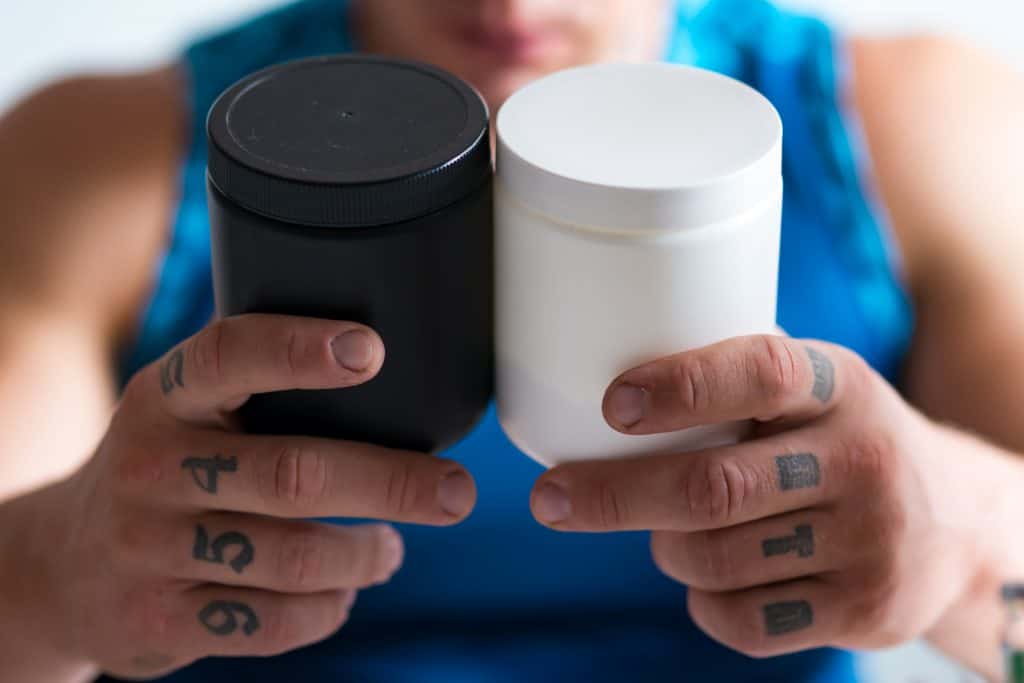
If you’re new to the world of sports supplements, amino acids occupy a diverse niche with substantial versatility. However, this is also what can make navigating the realm of EAAs a bit tricky.
When shopping for essential amino acids, supplements that provide an evidence-based ratio of all nine EAAs should move right to the top of your list. Sadly, these products seem few and far between despite the surge in EAA supplements as of late. Don’t worry, though — sticking with the best EAAs will steer you clear of the poorly formulated products.
Moreover, the quality of ingredients can vary significantly from one supplement to the next. It’s one thing for an EAA supplement to claim it has “5 grams of muscle-building BCAAs per serving,” but where do those amino acids come from? Are the amino acids derived from vegan sources? Has the product been tested for purity and potency? Does the formula contain added sugars, artificial colors, or unnecessary fillers?
These are all questions you need to consider when shopping for the best EAAs.
Methodology of the Ranking
It might seem like you’re saving money by purchasing a more affordable EAA supplement, but the cost only tells part of the story. Never judge a supplement by its price; always read the label to verify that the overall value is worth your hard-earned money. Flashy packaging and eye-catching claims on the front of the label don’t matter nearly as much as what’s inside the bottle.
Fortunately, several reputable supplement brands have recently launched high-quality EAAs that won’t break the bank.
The following five criteria were used to rank the best EAAs:
- Ratio of essential amino acids (per gram)
- Efficacy of additional non-EAA ingredients (if applicable)
- Ingredient quality (non-GMO, gluten-free, vegan, etc.)
- Taste and flavor variety
- Value (cost per serving and serving size)
A composite score between 0-100, with 100 being “perfect,” is then assigned to each supplement to determine the overall rankings.
The Best EAAs
Transparent Labs Intra
Ranking as our overall best EAA supplement, Transparent Labs Intra is a top-notch supplement for active gym-goers, athletes, and fitness enthusiasts. This intra-workout formula features a precise ratio of vegan EAAs, including 2:1:1 instantized BCAAs, along with branded ingredients like elevATP ancient peat extract, BetaPure betaine anhydrous, and Astragin adaptogens. In lay terms, this vegan EAA supplement covers all your bases and then some.
The EAAs in Transparent Labs Intra are also complemented by chelated electrolytes, coconut water powder, citrulline malate, taurine, and L-tyrosine — ingredients that work synergistically to volumize muscle cells, bolster blood flow, and enhance focus while you work out. Best of all, each serving of TL Intra is free of artificial colors, flavors, sweeteners, and fillers. The taste is comparatively lighter due to the natural flavorings and sweeteners, but If you’re searching for vegan EAAs that go above and beyond, look no further!
Pros
- Vegan-friendly EAAs
- Premium ingredient profile
- No artificial ingredients or fillers
Cons
- Expensive
- Taste is a bit mild
- Only two flavor options
Granite Essential Aminos
Granite supplements was founded by highly respected competitive bodybuilder-turned-coach John Meadows in 2017. The brand has since launched numerous quality formulas across a range of supplement niches. Granite recently revised its original Essential Aminos supplement to include a whopping 10 grams of EAAs, 70% of which come from 2:1:1 BCAAs (as patented Instaminos). It also provides several electrolytes to promote hydration before, during, and after training.
You’ll be happy to know that Granite Essential Aminos is vegan-friendly. It does contain the artificial sweetener sucralose, but no artificial colors or flavorings. While Granite Essential Aminos is a bit more expensive than other EAAs, the quality of this product is first rate. Not to mention, it tastes pretty darn great if you’re a fan of green apple juice or fruit punch.
Pros
- Robust vegan EAA profile
- Great taste
- Added electrolytes
Cons
- Pricey
- Only two flavor options
- Artificially sweetened
Jacked Factory EAA Surge
Jacked Factory is an up-and-coming sports supplement brand that has flourished since its inception. The brand’s essential amino supplement, EAA Surge is arguably the best compromise between high-quality ingredients and affordability. This formula features 6,700 milligrams of Amino9 vegan EAAs in every serving, plus 2,000 milligrams of pure L-citrulline, 2,000 milligrams of taurine, and 500 milligrams of coconut water powder for enhanced muscle recovery and hydration.
A major selling point for EAA Surge is that it’s just a tad over $20, or roughly $1 per serving. Considering the quality of the formula, this supplement is one of the best values for EAAs. As far as taste goes, EAA Surge is very refreshing, and something many active individuals will look forward to drinking before, during, or after a workout. It comes in two flavor options: pineapple and peach-mango.
Pros
- 6 grams of vegan EAAs per serving
- Added L-citrulline, taurine, and coconut water powder
- Refreshing taste
Cons
- Limited flavor options
- Contains artificial sweeteners and flavors
- Only 20 servings per container
Kaged Muscle Amino Synergy
Kaged Muscle founder and chief formulator Kris Gethin is no stranger to the health and fitness industry. His commitment to crafting clean supplements has garnered plenty of satisfied customers who keep coming back for more.
Amino Synergy fits right in line with other offerings from Kaged Muscle due to its innovative full-spectrum Ajipure EAAs and natural electrolytes from coconut water powder. This clean formula is also gluten-free, contains no artificial flavors, GMOs, or colors, and tastes pretty darn good considering how clean the formula is (note: it does contain sucralose). As a bonus, it also comes in caffeinated versions for those who want a little extra pep before they hit the gym (stick to the caffeine-free option for post-workout use).
The otherwise-stellar formula is marred by the fact that each serving only contains 3 grams of EAAs. As such, the value isn’t as great as it seems at first glance, and you’ll need to take two to three servings at a time to get the full benefit of EAAs. Beyond that, this vegan-friendly EAA supplement is a top contender that gets the job done.
Pros
- Made with vegan EAAs
- Caffeinated option for pre-workout use
- No GMOs, artificial colors, or flavoring
Cons
- Only 3 grams of EAAs per serving
- Contains artificial sweetener
- Only one flavor for caffeine-free version
Gaspari Proven EAAs
Gaspari Nutrition is a formidable supplement brand founded by and named after former pro bodybuilder Rich Gaspari. Gaspari’s Proven EAAs packs 9 grams of full-spectrum essential amino acids in every serving, including a hefty 6 grams of vegan fermented BCAAs in a 4:1:1 ratio of leucine to isoleucine and valine. The EAAs in this formula are paired with an electrolyte matrix powered by pink Himalayan salt for hydration support and proper recovery.
For a bread-and-butter amino acid supplement, Gaspari Proven EAAs is a solid value at just a shade over $1 per serving. However, it only comes in two flavors — blueberry acai and guava nectarine — and may not be to everyone’s liking from a taste standpoint. It’s also unclear if the six EAAs that aren’t BCAAs are vegan/fermented. Regardless, the positives of Proven EAAs outweigh the drawbacks.
Pros
- Solid ratio of all nine essential amino acids
- Electrolyte matrix from pink Himalayan salt
- Fermented vegan BCAAs
Cons
- Not the greatest flavors (only two options)
- Contains artificial sweeteners
- A bit pricey
Dymatize All 9 Amino
Dymatize Nutrition has been a key player in the supplement game for decades, and you can find many of its products at major retail chains throughout the world. Their latest amino acid supplement, All 9 Amino, features 10 grams of EAAs and 200 milligrams of coconut water powder per serving and comes in a range of awesome flavors, including:
- Cola lime twist
- Fruit fusion rush
- Orange cranberry
- Jolly green apple
- Juicy watermelon
All 9 Amino also provides ample doses of B vitamins plus vitamin C to facilitate athletic performance and recovery. Dymatize made this formula gluten-free, non-GMO, and free of food dyes. The catch is that it contains proprietary blends, so the ratio of EAAs is not disclosed.
Pros
- Great taste and many flavor options
- 10 grams of EAAs per serving
- Added B vitamins and vitamin C
Cons
- Artificially sweetened and flavored
- Not vegan friendly
- Contains proprietary blends
MPA Supps PharmGrade
Ranking as our best-tasting EAAs, Matt Porter Approved (MPA) Supps PharmGrade comes in tangerine crush and jolly watermelon flavors that are sure to satisfy your sweet tooth (if you don’t mind the artificial sweetener and flavoring used in the formula). The active ingredient profile is quite robust as well, featuring a massive 12 grams of pharmaceutical-grade Ajinomoto BCAAs and 3 grams of coconut water powder for hydration.
Unfortunately, this supplement is slightly hampered by low doses of non-BCAA EAAs, with only 250 milligrams of each. Tryptophan is also inexplicably omitted from the formula. Normally, these wouldn’t be issues to call out, but it’s a necessary nitpick given the expensive price point of PharmGrade. In any case, the quality ingredients and taste make this a solid option.
Pros
- Fantastic flavor
- Ingredient quality
- 12 grams of BCAAs per serving
Cons
- Expensive
- BCAA:EAA ratio is askew
- Limited flavor options
RSP AminoLean
AminoLean is RSP Nutrition’s fat-loss oriented EAA supplement. For its intended purpose, it delivers a solid formula featuring a blend of essential and nonessential amino acids plus caffeine, vitamins, minerals, conjugated linoleic acid (CLA), L-carnitine, green tea extract, and other ergogenic (read: performance-enhancing) ingredients. Overall, this supplement errs more on the side of being a pre-workout than an intra-workout or post-workout.
Arguably the strongest selling point for AminoLean is the myriad flavor options, including a few vegan-friendly iterations. It’s also priced reasonably and may come in handy for those actively trying to lose weight. This product’s major drawback is almost exclusively formulated with proprietary blends, and the nonessential amino acids seem to be more abundant than the essential aminos.
Pros
- Good for pre-workout energy
- May help with weight loss
- Tons of flavor options
Cons
- Contains more NEAAs than EAAs
- Proprietary blend of amino acids
- Artificially colored, sweetened, and flavored
Optimum Nutrition Essential Amino Energy + Electrolytes
Being a pioneer of protein powders, Optimum Nutrition is one of the most reputable sports supplement brands you can find. The brand’s Essential Amino Energy + Electrolytes formula holds its own among a sea of ever-increasing competition. This EAA supplement packs all nine essential amino acids plus caffeine, green tea extract, green coffee bean extract, and key electrolytes, making it a solid choice for those who want an extra jolt before and during exercise.
Unfortunately, Optimum Nutrition decided to use a proprietary blend of essential and nonessential amino acids in this formula. It’s concerning that the three amino acids listed in this blend are, in fact, nonessential. Since the blend is only 5,000 milligrams per serving, it’s reasonable to assume that the doses of EAAs are pretty low.
On the plus side, Optimum Nutrition is best known for its delicious-tasting products, and Essential Amino Energy + Electrolytes lives up to that standard with three fruit flavors: tangerine wave, watermelon, and pineapple twist. Even better, this EAA supplement is priced very reasonably. It’s not the greatest formula out there, but it gets the job done for the most part.
Pros
- Suitable as a pre-workout supplement
- Exceptional taste
- Affordable
Cons
- Proprietary blend of amino acids
- Doses of EAAs appear too low
- Artificially flavored and sweetened
Animal Nutrition Juiced Aminos
Animal Nutrition is no stranger to the supplement realm — they’ve been in the game for decades, catering specifically to hardcore bodybuilders and gym-goers out there. Behind Animal Nutrition’s edgy branding is a range of respectable formulas, and Juiced Aminos is a prime example. While this amino acid supplement is not without flaws, it packs a solid dose of BCAAs and EAAs with 6,000 milligrams per serving. Juiced Aminos also contains 4,000 milligrams combined of L-glutamine, L-citrulline malate, taurine, betaine anhydrous, and L-carnitine.
The main drawback is that this product contains proprietary blends, so you don’t know the exact amounts of EAAs and other formula ingredients. Moreover, the formula is missing tryptophan from the EAAs.
Nevertheless, Juiced Aminos is very affordable, and feedback from consumers is promising. It also comes in a range of refreshing fruit flavors, including grape, orange, strawberry limeade, and peach mango.
Pros
- Great flavor
- Affordability
- Solid blend of synergistic ingredients
Cons
- Contains artificial sweeteners and colors
- Not hypoallergenic
- Formulated with proprietary blends
FAQ and Related Content
So we’ve presented you with the best EAAs that we’ve found. But you might understandably have more questions, or you might want to compare these products against others that you’re considering. So with this in mind, we’ve compiled this section anticipate these questions, and provide links to other content that you might find helpful in your search!
- EAAs vs. BCAAs: What’s the Difference?
- The Best High-End Next-Generation Pre-Workout Supplements
- The 10 Best Electrolyte & Sports Drinks for Athletes
- Best EAAs: Top 10 Essential Amino Acid Supplements Ranked
- The Best Pre-Workout Supplements
Should I Take EAAs if I Already Use BCAAs?
While they provide three essential aminos, BCAA supplements lack the complete profile of EAAs necessary to build muscle. Nevertheless, BCAAs do have some benefit since they contain arguably the three most important EAAs: L-leucine, L-isoleucine, and L-valine. The BCAAs each have a characteristic branch of carbon molecules in their chemical structure (hence the term “branched-chain”) and play a vital role as the “master regulators” of protein synthesis.
But recall that BCAAs are limited if there aren’t enough of the remaining six EAAs available to create new proteins. Therefore, EAAs are generally superior to BCAAs if you have to choose between one supplement or the other.
When Should I Take EAAs?
For most active individuals, post-workout is the best time to take the best EAAs. Depending on when you consume your pre-workout meal, EAAs may also be useful before or during a workout. Depending on your pre-workout regimen however, you might want to wait until after your workout.
While potentially not as ideal to take EAAs after a workout, it’s important to remember to not overload your body–specifically your kidneys–before a workout. So always be sure to monitor how you feel, and experiment with what works best for your body.
Do I Need EAAs if I Eat a High-Protein Diet?
No, but EAAs may still benefit you. While whole foods should be your predominant source of amino acids, supplements are a prudent adjunct for athletic performance and muscle growth. Remember, the essential amino acids in EAA supplements are not the same as intact protein; they are free-form amino acids that don’t need the help of digestive enzymes to be split apart (i.e. hydrolyzed) like the amino acids found in whole-food protein. Thus, EAAs absorb rapidly and are gentle on the stomach, making them more practical pre-, intra-, and post-workout.
Are EAAs Vegan Friendly?

They certainly can be! The trick is looking for EAAs that are fermented since the fermentation process does not involve animals. When looking at the supplement facts, it will explicitly state if the amino acids are fermented. If you don’t see anything about fermented amino acids on the label, odds are it’s not a vegan-friendly source of EAAs.
What Ratio of EAAs is Best to Build Muscle?
Using the amino acid composition of human skeletal muscle as a reference, the ideal ratio of EAAs for muscle protein synthesis is roughly:
- Leucine: 20%
- Lysine: 15%
- Threonine: 14%
- Histidine: 11%
- Isoleucine: 10%
- Valine: 10%
- Phenylalanine: 10%
- Methionine: 5%
- Tryptophan: 5%
As you can see, the BCAAs comprise 40% of the total EAA matrix. This means that for every 10 grams of EAAs, there should be about 2 grams of L-leucine, 1 gram of L-valine, and 1 gram of L-isoleucine.
It’s okay for there to be “more than enough” of any essential amino acid so long as it doesn’t come at the cost of reducing one of the remaining EAAs below an effective level. An EAA formula that provides 30% leucine, 5% isoleucine, and 5% valine would theoretically be inferior to a formula with 20% leucine, 10% valine, and 10% isoleucine.

